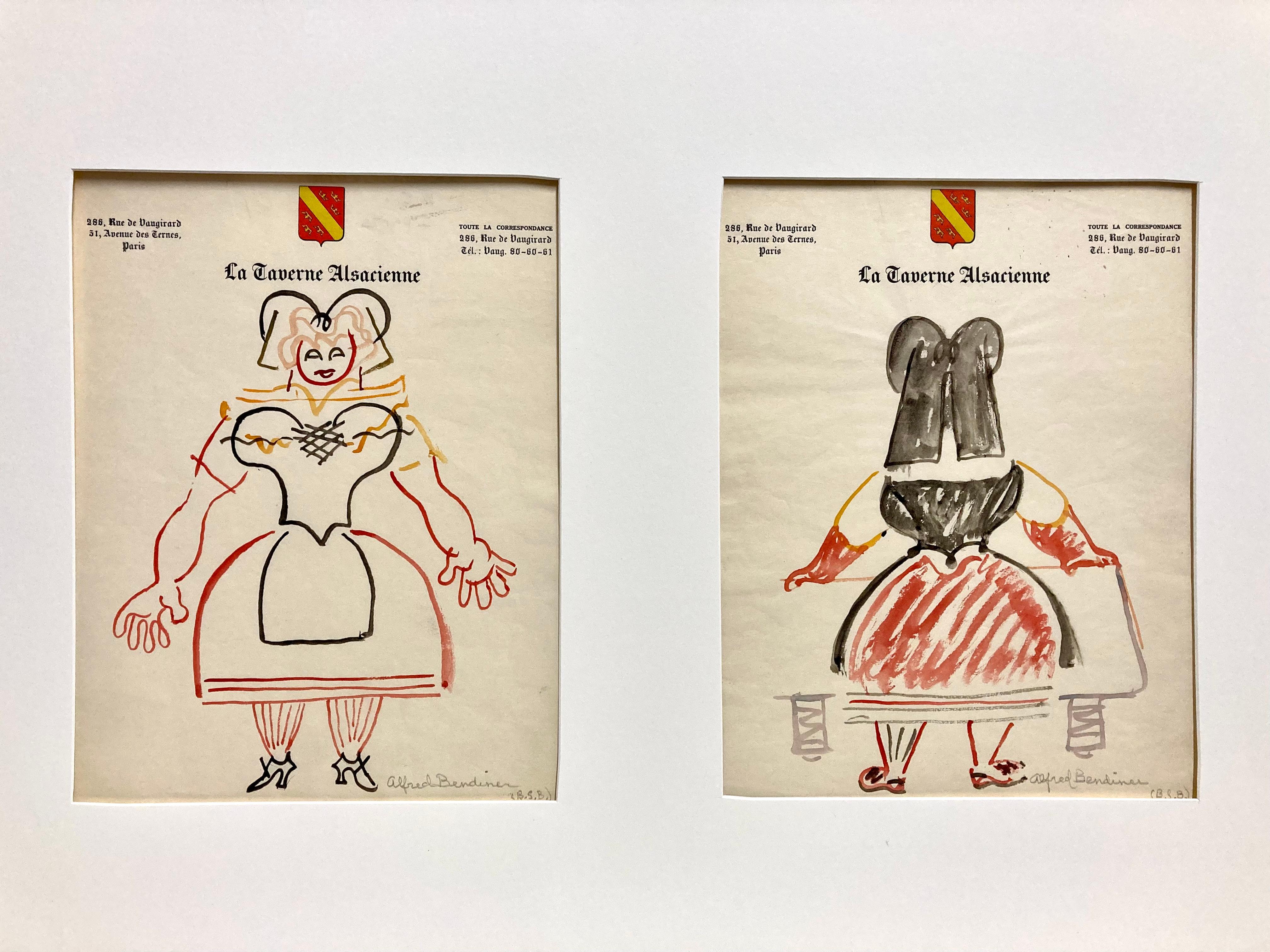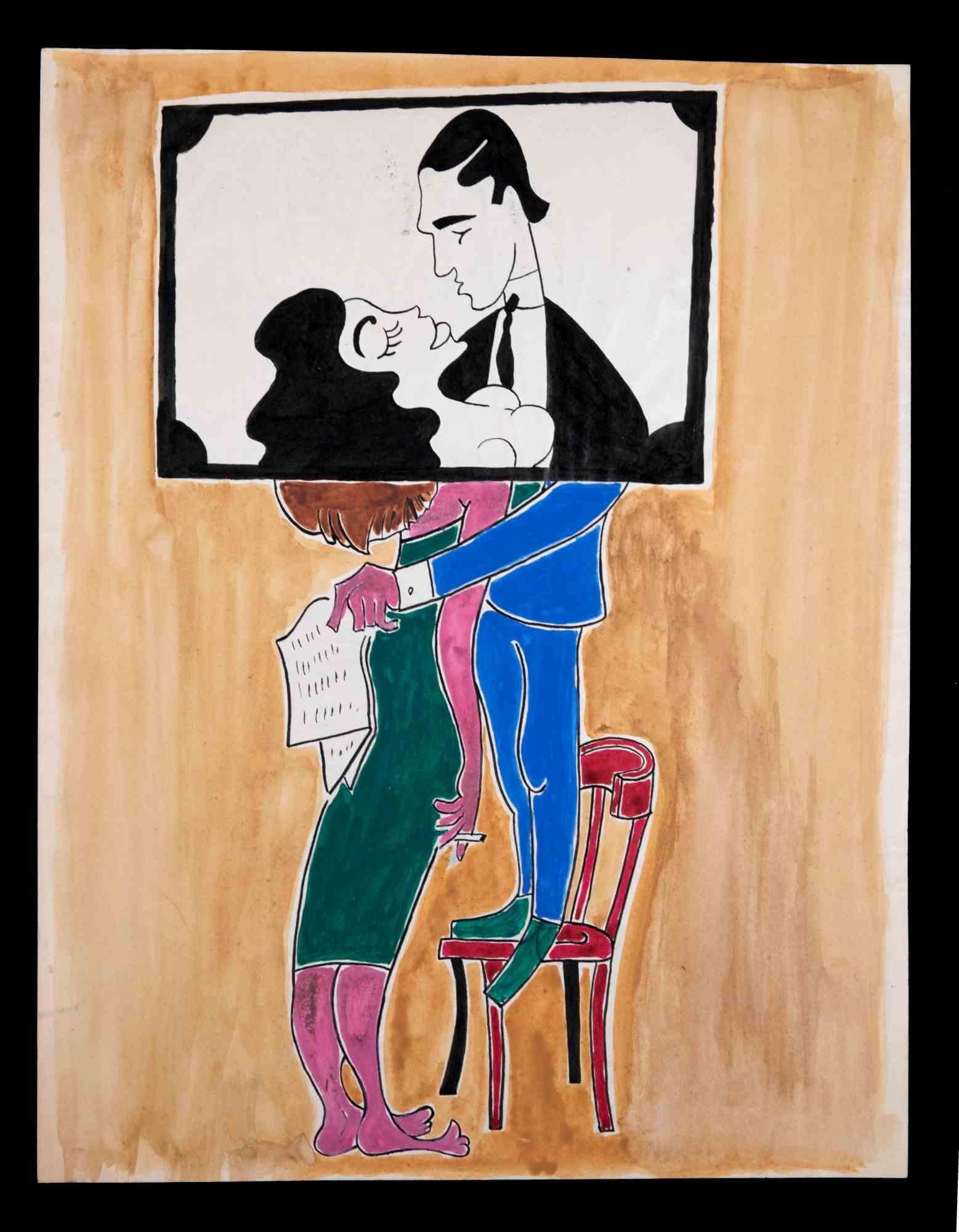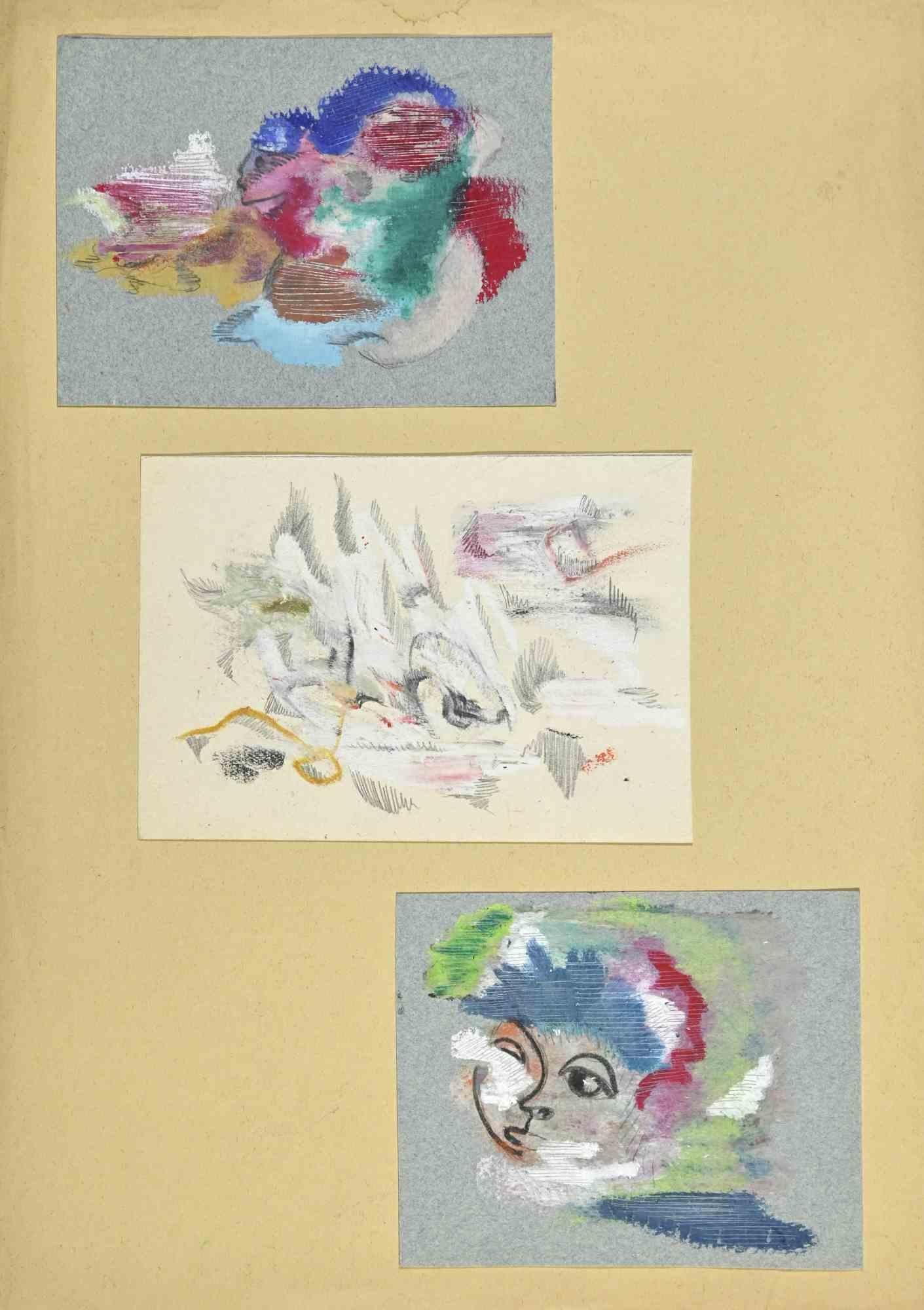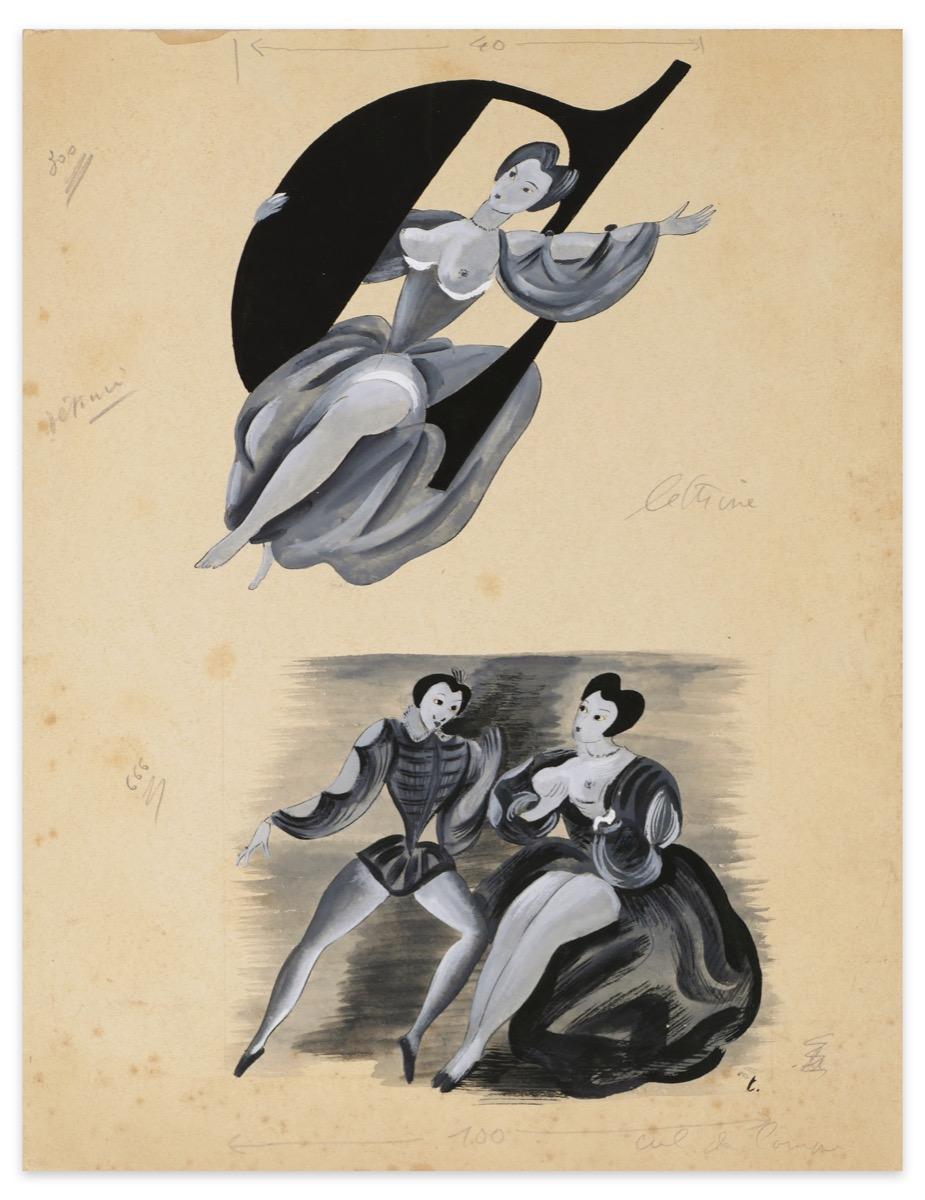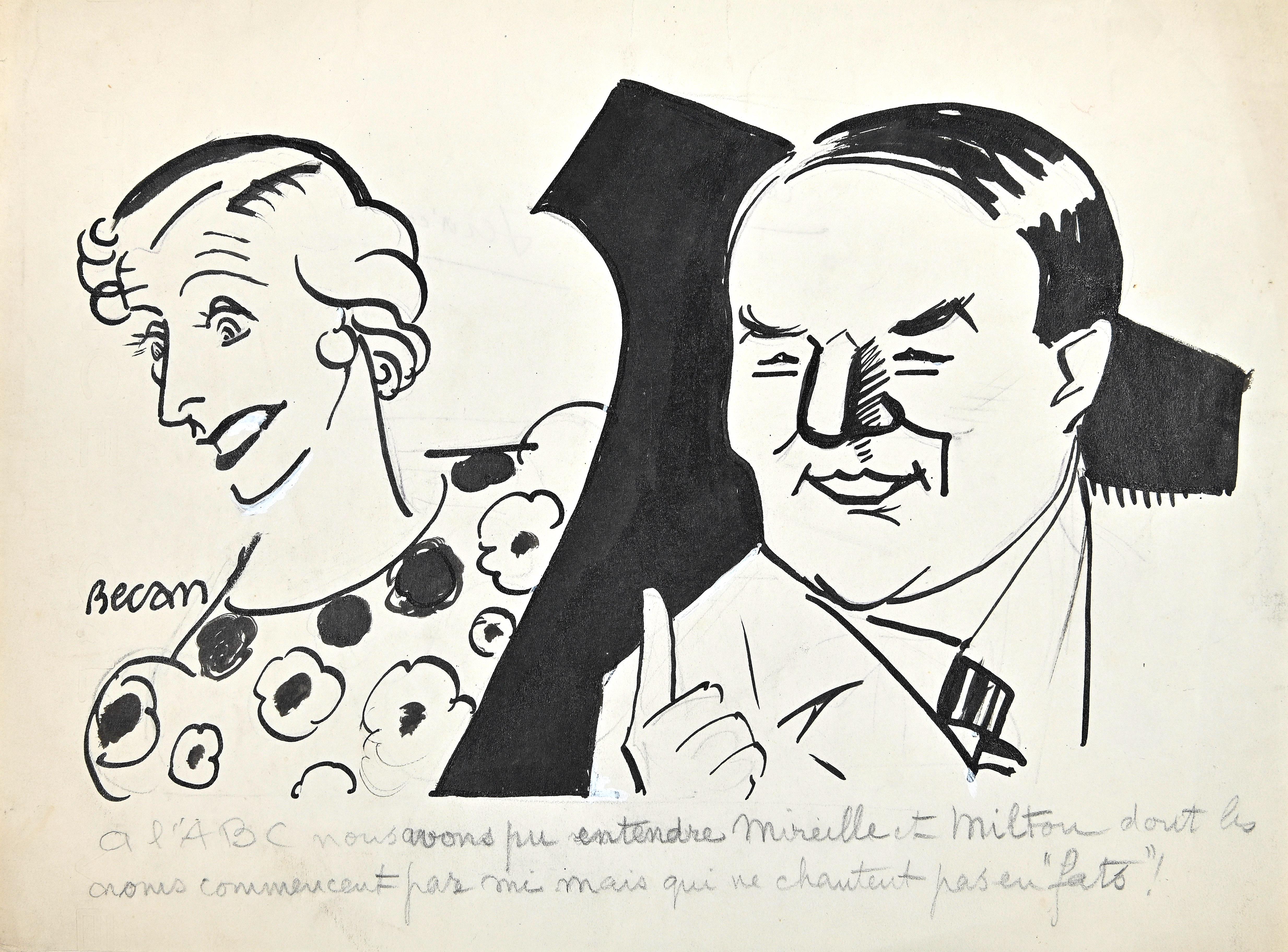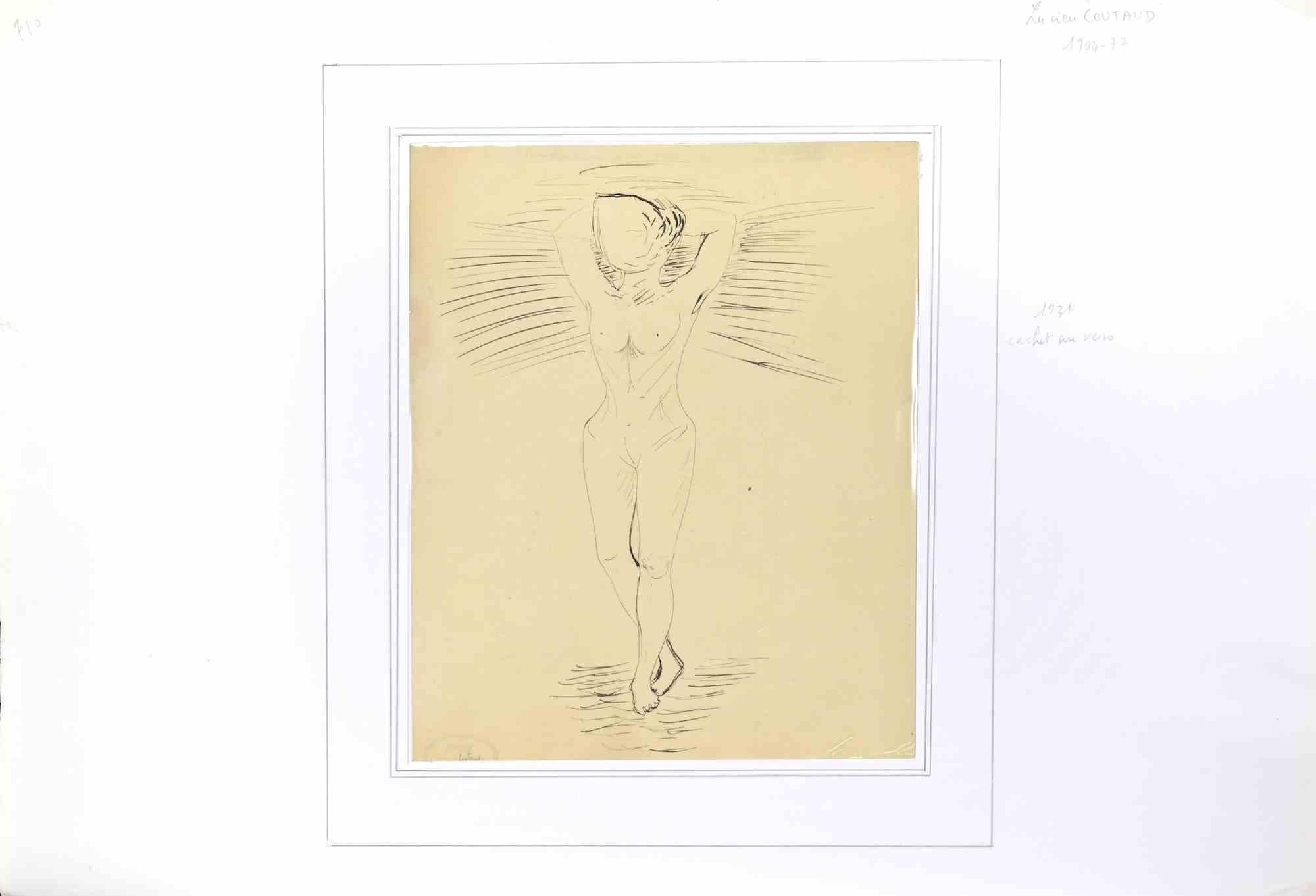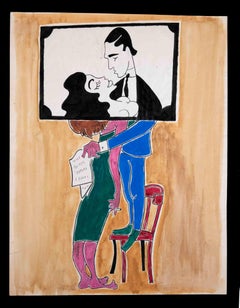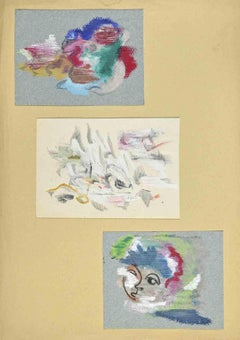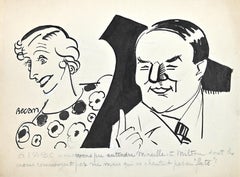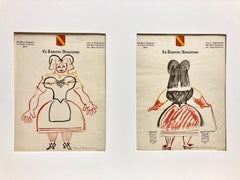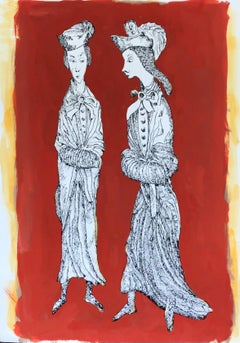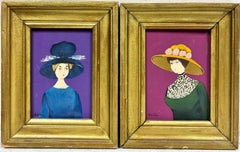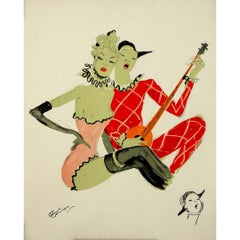Items Similar to Double Study for the Affiche "La Quinzaine du Sac de Fr" - 1940s - Bernard Bécan
Want more images or videos?
Request additional images or videos from the seller
1 of 7
Bernard BécanDouble Study for the Affiche "La Quinzaine du Sac de Fr" - 1940s - Bernard Bécan1940
1940
$1,018.42
£758.01
€850
CA$1,394.98
A$1,551.53
CHF 810.16
MX$18,880.42
NOK 10,346.96
SEK 9,703.63
DKK 6,470.75
Shipping
Retrieving quote...The 1stDibs Promise:
Authenticity Guarantee,
Money-Back Guarantee,
24-Hour Cancellation
About the Item
Double Study for the affiche "La quinzaine du sac de France" is a beautiful preparatory study - pencil drawing on paper - attributed to Bernard Kahn. It comes with the original tempera on paper that the study refers to. Good conditions, except for some discoloration and folds on the higher margin and on the lower right.
Bernard Kahn (1890, Stockholm - 1942, Paris), also known as Bécan, is a French painter, draftsman, lithographer, aquafortist, and poster artist.
- Creator:
- Creation Year:1940
- Dimensions:Height: 22.05 in (56 cm)Width: 16.15 in (41 cm)Depth: 0.04 in (1 mm)
- Medium:
- Movement & Style:
- Period:
- Condition:Insurance may be requested by customers as additional service, contact us for more information.
- Gallery Location:Roma, IT
- Reference Number:Seller: M-967451stDibs: LU65033834271
About the Seller
4.9
Platinum Seller
Premium sellers with a 4.7+ rating and 24-hour response times
1stDibs seller since 2017
7,617 sales on 1stDibs
Typical response time: 3 hours
- ShippingRetrieving quote...Shipping from: Grasse, France
- Return Policy
Authenticity Guarantee
In the unlikely event there’s an issue with an item’s authenticity, contact us within 1 year for a full refund. DetailsMoney-Back Guarantee
If your item is not as described, is damaged in transit, or does not arrive, contact us within 7 days for a full refund. Details24-Hour Cancellation
You have a 24-hour grace period in which to reconsider your purchase, with no questions asked.Vetted Professional Sellers
Our world-class sellers must adhere to strict standards for service and quality, maintaining the integrity of our listings.Price-Match Guarantee
If you find that a seller listed the same item for a lower price elsewhere, we’ll match it.Trusted Global Delivery
Our best-in-class carrier network provides specialized shipping options worldwide, including custom delivery.More From This Seller
View AllA Couple - Original Drawing By Gérard Lauzier - Mid-20th Century
By Gérard Lauzier
Located in Roma, IT
A Couple is an Original Ink and Watercolor realized by Gérard Lauzier (1932-2008).
Good condition and vivid colors.
No signature.
Gérard Lauzier (30 November 1932 – 6 December 2008) was a French comics...
Category
Mid-20th Century Modern Figurative Drawings and Watercolors
Materials
Watercolor
Figures - Drawing by Henri Espinouze - 1950s
Located in Roma, IT
Figures is a drawing in mixed media on paper realized in the 1950s by Henri Espinouze (1915-1982).
Each piece 8 x 12 cm, applied on a paper.
The state of preservation is good.
The...
Category
1950s Modern Figurative Drawings and Watercolors
Materials
Watercolor
Figures - Mixed Media Drawing by Louis Touchagues - Mid-20th Century
By Louis Touchagues
Located in Roma, IT
Figures is a artwork realized by Louis Touchagues.
Original mixed Media Drawing.
Annotated in pencil on the lower right corner: "Paris magazine April 35".
Fair conditions, light s...
Category
Late 20th Century Modern Figurative Drawings and Watercolors
Materials
Paper, Ink, Mixed Media, Watercolor
Sketch - Original Drawing by Bernard Bécan - Mid-20th Century
By Bernard Bécan
Located in Roma, IT
Sketch is an Original Black Marker Drawing realized by Bernard Becan in the Mid-20 Century.
The little artwork is in good condition except for being age...
Category
Mid-20th Century Modern Figurative Drawings and Watercolors
Materials
Permanent Marker
Portrait - Drawing By Lucien Coutaud - Mid-20th Century
By Lucien Coutaud
Located in Roma, IT
Portrait is a modern artwork realized in the Mid-20th Century.
China ink.
Good conditions.
Category
Mid-20th Century Modern Figurative Drawings and Watercolors
Materials
Paper
Sketch - Original Drawing by Bernard Bécan - Mid-20th Century
By Bernard Bécan
Located in Roma, IT
Sketch is an Original Black Marker Drawing realized by Bernard Becan in the Mid-20 Century.
The little artwork is in good condition except for being age...
Category
Mid-20th Century Modern Figurative Drawings and Watercolors
Materials
Paper, Permanent Marker
You May Also Like
Alfred Bendiner, La Alsacienne (pair)
By Alfred Bendiner
Located in New York, NY
Leave it to the Bendiners to find an Alsatian restaurant in Paris (La Taverne Alsacienne) and use it's stationary to such a great end! And thank goodness that the paper required two ...
Category
1960s American Modern Figurative Drawings and Watercolors
Materials
Watercolor
1950's Modernist/ Cubist Painting - Two Fine Lady Caricatures
By Bernard Labbe
Located in Cirencester, Gloucestershire
French Portrait
by Bernard Labbe (French mid 20th century)
original gouache on artist paper, unframed
size: 11.75 x 8.25 inches
condition: very good and ready to be enjoyed.
proven...
Category
Mid-20th Century Modern Portrait Paintings
Materials
Gouache
1960’s French Pair Portraits Fashion Ladies Original Paintings
Located in Cirencester, Gloucestershire
French School, 1960’s
signed pair oil on board, framed
framed: 5 x 4 inches
board: 4 x 3 inches
private collection, France
overall very good and sound condition
Category
Mid-20th Century Modern Figurative Paintings
Materials
Oil
1956 lithography by Jean-Gabriel Domergue - Arlette au double visage
By Jean-Gabriel Domergue
Located in PARIS, FR
The 1956 lithography by Jean-Gabriel Domergue, part of the renowned La Parisienne portfolio, stands as an elegant representation of post-war French art and a celebration of the quint...
Category
1950s Prints and Multiples
Materials
Lithograph, Paper
Lanvin Of Paris Original c1950s Advertising Watercolor Artwork
By Alexander Warren Montel
Located in Bristol, CT
Mat Sz: 15 1/8"H x 20 1/8"W
Image Sz: 10"H x 5 3/8"W
Alexander Warren Montel (1921-2002)
Fashion illustrator for House of Lanvin Paris in the 1950s featured in Harper's Bazaar
Tw...
Category
1950s Figurative Drawings and Watercolors
Materials
Watercolor
“Guy au portrait de madame Descazeaux” / Guy (Bardone) in the portrait of Madame
By René Genis
Located in Berlin, MD
Rene Genis (French 1922-2004) “Guy au portrait de madame Descazeaux” / Guy (Bardone) in the portrait of Madame Descazeaux. Ink on paper laid down on matt board. Unsigned. Image siz...
Category
Mid-20th Century French School Portrait Drawings and Watercolors
Materials
India Ink
More Ways To Browse
Affiches Vintage
Affiche Vintage Paris
Stockholm Vintage Poster
Dior 1998 Pink
Emilio Garcia
James Mcqueen
Leon Cogniet
Mango Painting
Marini Oil Painting
Michelangelo Pieta
Raoul Dufy Horses
Valentino 2011
Adam Eve Oil Canvas
Bathing Cap
Bob Ross Originals
Chairs Virginia House
Dior Baby Blue
Dutch Painting Church Interior
